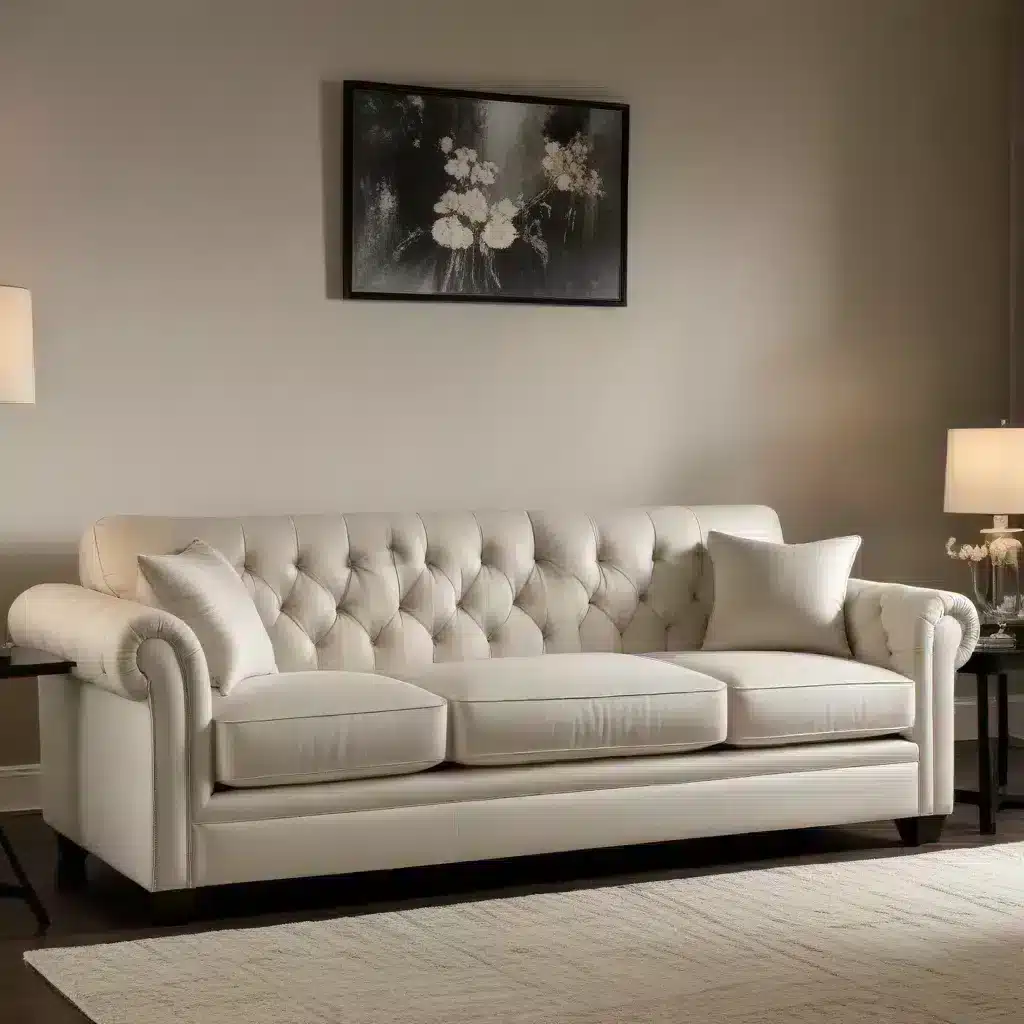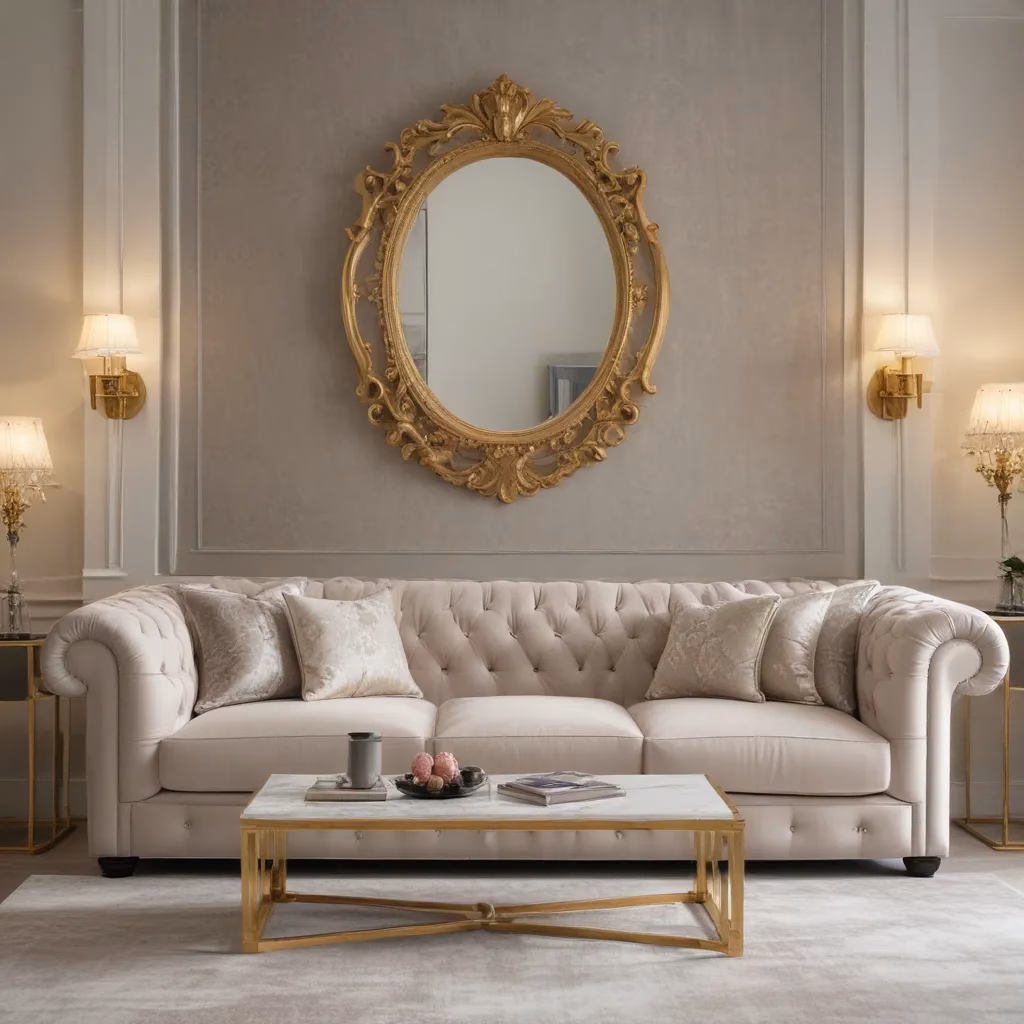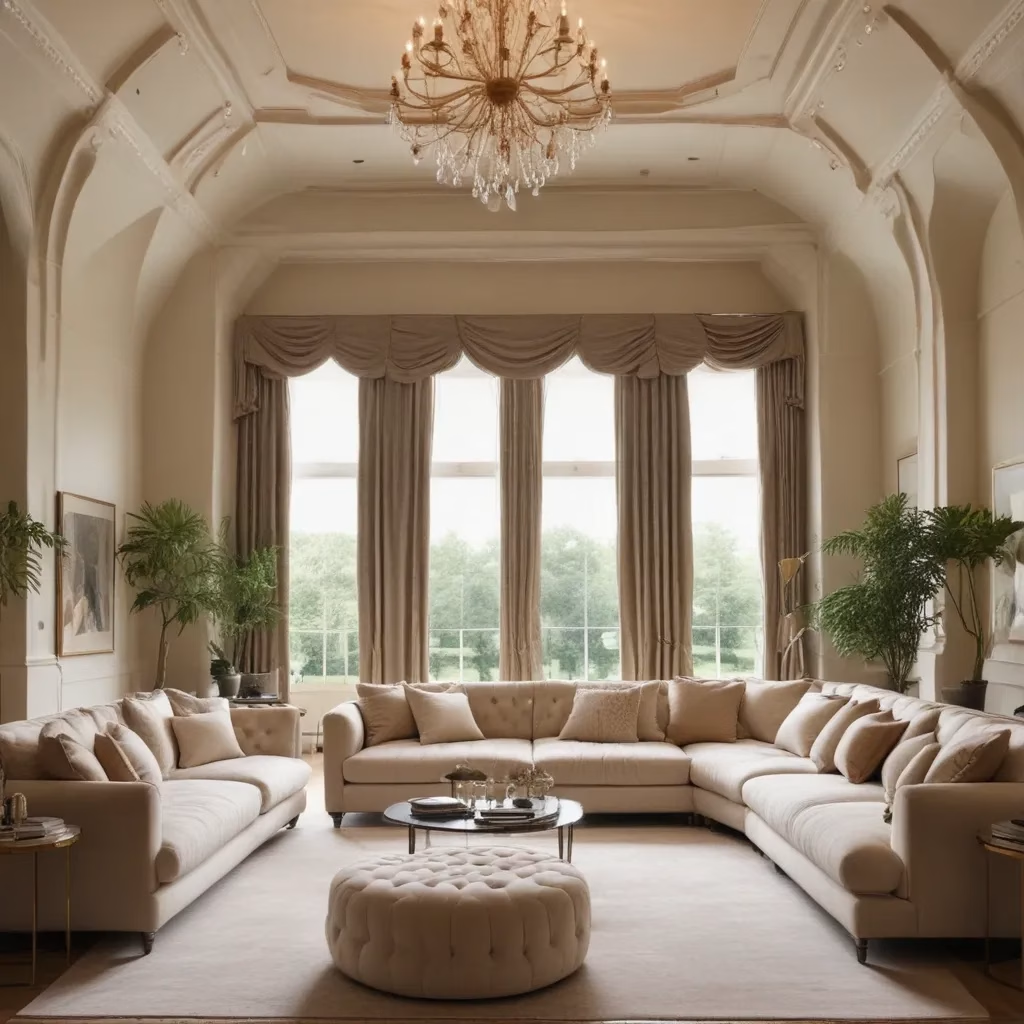
The Evolution of Sofa Aesthetics
As a furniture specialist with years of experience in the industry, I’ve witnessed firsthand the fascinating evolution of sofa design. The journey from traditional, bulky couches to sleek, contemporary pieces has been nothing short of remarkable. Today’s sofas are a perfect blend of form and function, offering not just comfort but also serving as statement pieces in modern interiors.
One of the most striking trends I’ve observed is the shift towards clean lines and minimalist silhouettes. Gone are the days of overstuffed, ornate sofas that dominated living rooms. Now, we’re seeing a preference for streamlined designs that exude sophistication without overwhelming the space. This change reflects a broader cultural shift towards simplicity and functionality in home decor.
Another aspect that’s revolutionized sofa design is the integration of technology. Smart sofas with built-in USB ports, wireless charging pads, and even voice-controlled features are becoming increasingly popular. As someone who’s always been fascinated by the intersection of technology and furniture, I find this trend particularly exciting. It’s a testament to how our living spaces are evolving to meet the demands of our digital lifestyle.
Selecting the Perfect Sofa: A Blend of Style and Substance
When it comes to choosing the right sofa, there’s more to consider than just aesthetics. As I often tell my clients, a sofa is an investment piece that should stand the test of time both in terms of durability and style. So, how do you strike the perfect balance?
Firstly, consider the scale of your space. A common mistake I see is people opting for sofas that are either too large or too small for their living areas. Take accurate measurements of your room and factor in traffic flow. You want a sofa that complements your space, not overwhelms it.
Next, think about your lifestyle. Do you have young children or pets? If so, you might want to prioritize durability and easy-to-clean fabrics. Leather and performance fabrics have come a long way in terms of both style and practicality. I’ve seen countless families breathe a sigh of relief when they realize they can have a beautiful sofa that’s also kid-friendly.
Lastly, don’t underestimate the importance of comfort. While a sofa might look stunning in a showroom, it needs to feel good too. I always encourage my clients to spend time sitting on a sofa before making a purchase. Pay attention to the seat depth, cushion firmness, and back support. Remember, a sofa is meant to be lived in, not just looked at.
The Art of Upholstery: Fabrics That Speak Volumes
In my years of working with furniture, I’ve developed a deep appreciation for the art of upholstery. The right fabric can transform a simple sofa into a work of art, adding texture, color, and personality to your living space. Let’s explore some of the most captivating upholstery trends I’ve encountered recently.
One trend that’s captured my attention is the resurgence of rich, jewel-toned fabrics. Deep emeralds, sapphire blues, and ruby reds are making a bold statement in contemporary interiors. These colors add depth and sophistication to neutral spaces, creating a focal point that’s both elegant and inviting.
Another trend I’m excited about is the use of performance fabrics that mimic the look and feel of more delicate materials. These innovative textiles offer the luxurious appearance of velvet or linen but with enhanced durability and stain resistance. It’s a game-changer for those who want to combine style with practicality.
Texture is also playing a significant role in current upholstery trends. I’m seeing a lot of interest in bouclé fabrics, which add a cozy, tactile element to sofas. These nubby textures not only look great but also provide a sensory experience that enhances the overall comfort of the piece.
Maintaining Your Sofa: Tips from a Furniture Expert
As someone who’s spent years in the furniture industry, I can’t stress enough the importance of proper sofa maintenance. A well-cared-for sofa not only looks better but also lasts longer, saving you money in the long run. Here are some of my top tips for keeping your sofa in prime condition:
Regular vacuuming is crucial, especially for fabric sofas. Use the upholstery attachment of your vacuum cleaner to remove dust, crumbs, and pet hair. Don’t forget to vacuum under the cushions and in the crevices where debris can accumulate.
For leather sofas, I recommend wiping them down with a slightly damp cloth once a week to remove dust and prevent the leather from drying out. Be sure to use a leather conditioner every few months to keep the material supple and prevent cracking.
Addressing spills immediately is key to preventing stains. Blot (don’t rub!) the spill with a clean, white cloth to absorb as much liquid as possible. For tougher stains, consult the manufacturer’s care instructions or seek professional cleaning services.
Rotation is another crucial aspect of sofa maintenance that’s often overlooked. Regularly rotating cushions and switching their positions helps distribute wear evenly, preventing premature sagging and extending the life of your sofa.
Lastly, protect your sofa from direct sunlight. UV rays can cause fading and deterioration of both fabric and leather. Consider using window treatments or moving your sofa away from windows to preserve its color and integrity.
Sofa Placement: Maximizing Comfort and Flow
The way you position your sofa can have a significant impact on the overall feel and functionality of your living space. Over the years, I’ve helped countless clients optimize their room layouts, and I’ve learned a few key principles that can make a big difference.
First and foremost, consider the focal point of your room. In many living rooms, this might be a fireplace or a large window with a view. Positioning your sofa to face this focal point creates a natural and inviting arrangement. If you don’t have an obvious focal point, you can create one with a large piece of art or a media unit.
Traffic flow is another crucial factor to consider. You want to ensure there’s enough space for people to move comfortably around the sofa without feeling cramped. A good rule of thumb is to leave at least 30 inches of walking space around the sofa.
In larger rooms, don’t be afraid to float your sofa away from the walls. This can create a more intimate seating area and add depth to the space. Pair it with a console table behind the sofa to anchor it and provide additional storage or display space.
For smaller spaces, consider a sectional sofa. These versatile pieces can help maximize seating without overwhelming the room. Just be sure to choose a size that’s proportionate to your space.
Remember, the goal is to create a layout that encourages conversation and relaxation. Experiment with different arrangements until you find one that feels right for your space and lifestyle.
The Psychology of Color in Sofa Selection
As a furniture specialist, I’ve always been fascinated by the psychological impact of color choices in interior design, particularly when it comes to sofas. The color of your sofa can significantly influence the mood and atmosphere of your living space.
Neutral colors like beige, gray, and white are perennial favorites for sofas, and for good reason. These hues provide a versatile backdrop that can easily adapt to changing design trends. They create a sense of calm and spaciousness in a room. However, don’t assume that neutral means boring. Textures and subtle patterns can add depth and interest to a neutral sofa.
On the other hand, bold colors can make a powerful statement. A vibrant blue sofa, for instance, can evoke feelings of tranquility and depth, reminiscent of the ocean or sky. Red sofas, while less common, can add energy and warmth to a space. They’re particularly effective in rooms with a lot of natural light.
Green is another color that’s gaining popularity in sofa design. Associated with nature and growth, green sofas can create a refreshing, harmonious atmosphere in your living room. From sage to emerald, there’s a shade of green to suit every style.
When selecting a sofa color, consider not just your personal preferences but also how the color will interact with the existing elements in your room. Will it complement or contrast with your wall color? How will it look with your flooring and other furniture pieces?
Remember, the right color can tie a room together, while the wrong one can throw off the entire balance of your space. Don’t be afraid to request fabric swatches and view them in your home under different lighting conditions before making a final decision.
Sustainable Sofas: The Future of Furniture
In recent years, I’ve noticed a growing interest in sustainable furniture options, and sofas are no exception. As consumers become more environmentally conscious, manufacturers are responding with eco-friendly alternatives that don’t compromise on style or comfort.
One of the most exciting developments I’ve seen is the use of recycled and upcycled materials in sofa construction. From frames made of reclaimed wood to cushion fillings created from recycled plastic bottles, these innovative approaches are reducing waste and minimizing environmental impact.
Another trend in sustainable sofa design is the use of organic and natural materials. Organic cotton, wool, and even bamboo fabrics are becoming more readily available. These materials not only have a lower environmental footprint but also offer excellent durability and comfort.
Some manufacturers are also focusing on the entire lifecycle of their products, designing sofas that can be easily disassembled and recycled at the end of their life. This cradle-to-cradle approach is a significant step towards reducing furniture waste in landfills.
When shopping for a sustainable sofa, look for certifications like FSC (Forest Stewardship Council) for wood components or GOTS (Global Organic Textile Standard) for fabrics. These certifications ensure that the materials used meet strict environmental and social standards.
It’s worth noting that sustainable sofas often come with a higher price tag. However, many of my clients find that the long-term benefits – both environmental and in terms of durability – make the investment worthwhile.
Sofa Trends to Watch: What’s Next in Furniture Design?
As someone who’s constantly keeping an eye on the latest developments in furniture design, I’m excited to share some of the emerging trends I’ve observed in the world of sofas. These trends not only reflect changing aesthetics but also evolving lifestyles and technological advancements.
One trend that’s gaining momentum is the concept of modular sofas. These versatile pieces allow you to reconfigure your seating arrangement to suit different needs and spaces. Whether you’re hosting a large gathering or just want to change up your living room layout, modular sofas offer unparalleled flexibility.
Another trend I’m seeing is the integration of biophilic design elements into sofa construction. This could mean incorporating natural materials like wood or stone into the frame, or using fabrics with organic patterns and textures. The goal is to create a stronger connection with nature, even in indoor spaces.
In terms of shapes, I’m noticing a move towards softer, more organic forms. Curved sofas and rounded edges are replacing the sharp angles that have dominated furniture design in recent years. These softer silhouettes create a more inviting, cozy atmosphere in living spaces.
Technology integration continues to evolve in sofa design. Beyond the basics like built-in USB ports, we’re now seeing sofas with integrated sound systems, adjustable lumbar support, and even air purification features. As our homes become smarter, our furniture is adapting to keep pace.
Lastly, there’s a growing interest in statement sofas that serve as the centerpiece of a room. Whether it’s through an unusual shape, a bold color, or an eye-catching fabric, these sofas are designed to be conversation starters.
The Role of Sofas in Open-Plan Living
The rise of open-plan living has had a significant impact on sofa design and placement. As someone who’s helped many clients navigate the challenges of furnishing open spaces, I’ve developed some strategies for using sofas to define and organize these areas effectively.
In open-plan layouts, sofas play a crucial role in delineating different functional zones. For instance, a well-placed sofa can create a clear boundary between a living area and a dining space without the need for walls. I often recommend using a sofa with a high back for this purpose, as it provides a visual barrier while maintaining the open feel of the space.
Another technique I frequently employ is the use of multiple sofas or a combination of sofas and armchairs to create distinct seating areas within a larger space. This approach works particularly well in large, open living areas where a single sofa might feel lost or inadequate.
When it comes to sofa styles for open-plan living, versatility is key. I often recommend sofas with clean lines and neutral colors that can easily adapt to changing decor styles. However, don’t be afraid to use your sofa as an accent piece. A boldly colored or uniquely shaped sofa can serve as a focal point, anchoring the space and adding visual interest.
In open-plan spaces, it’s also important to consider the back of your sofa, as it’s likely to be visible from multiple angles. Look for sofas with attractive rear views or consider placing a console table behind the sofa to create a more finished look.
Remember, in open-plan living, your sofa isn’t just a piece of furniture – it’s an architectural element that helps define your space. Choose and position it thoughtfully to create a harmonious, functional layout.
Caring for Different Sofa Materials: A Comprehensive Guide
Throughout my career, I’ve encountered sofas made from a wide variety of materials, each with its own unique care requirements. Understanding how to properly maintain different sofa materials is crucial for preserving their appearance and extending their lifespan. Let’s explore some of the most common sofa materials and their specific care needs.
For leather sofas, regular dusting with a soft, dry cloth is essential. Avoid using water or cleaning products unless specifically designed for leather. Instead, use a leather conditioner every few months to keep the material supple and prevent cracking. For spills, blot immediately with a clean, dry cloth and avoid rubbing, which can damage the leather.
Fabric sofas require regular vacuuming to remove dust and debris. For spills, blot (don’t rub!) with a clean, white cloth. Avoid over-wetting the fabric, as this can lead to water stains. For deeper cleaning, consider professional services or use a fabric cleaner appropriate for your specific type of upholstery.
Microfiber sofas are known for their durability and stain resistance, but they still require proper care. Use a soft brush attachment when vacuuming to avoid damaging the fibers. For spills, blot immediately and use a small amount of mild soap and water if necessary. Always test cleaning solutions on an inconspicuous area first.
Velvet sofas require gentle handling. Use a soft brush attachment when vacuuming, and brush in the direction of the nap to maintain its lush appearance. For spills, blot gently and seek professional cleaning for stubborn stains.
Remember, regardless of the material, always check the manufacturer’s care instructions before attempting any cleaning. These guidelines are tailored to the specific construction and treatment of your sofa and can help prevent accidental damage.
Sofa Accessories: Enhancing Comfort and Style
While the sofa itself is undoubtedly the star of your living room, the right accessories can elevate its comfort and style to new heights. Over the years, I’ve experimented with various sofa accessories and have found some to be particularly effective in transforming the look and feel of a space.
Throw pillows are perhaps the most versatile sofa accessory. They offer an easy way to introduce color, texture, and pattern to your sofa. I often advise clients to invest in pillow covers rather than entire pillows. This allows you to change your look seasonally or whenever the mood strikes, without the need for storage space for multiple pillows.
A well-chosen throw blanket can add both style and function to your sofa. Drape it casually over an arm or the back of the sofa for a relaxed look, or fold it neatly for a more polished appearance. Opt for materials that contrast with your sofa fabric – for example, a chunky knit throw on a smooth leather sofa creates an interesting textural contrast.
Sofa tables or console tables placed behind a floating sofa can serve multiple purposes. They provide a surface for lamps, decorative objects, or even a place to set down a drink. In open-plan spaces, they help define the living area and create a more finished look.
For those who like to eat or work on the sofa, a sturdy tray table can be a game-changer. Look for ones with foldable or adjustable legs for easy storage when not in use.
Lastly, don’t underestimate the power of good lighting near your sofa. A well-placed floor lamp or table lamp can create a cozy reading nook and enhance the overall ambiance of your living space.
Remember, the key to successful accessorizing is balance. You want to enhance your sofa, not overwhelm it. Start with a few key pieces and adjust as needed to create a look that’s both stylish and functional.
In conclusion, sofas are more than just pieces of furniture – they’re the heart of our living spaces, where we relax, entertain, and create memories. By understanding the nuances of sofa design, care, and styling, you can create a living space that’s not only beautiful but also perfectly tailored to your lifestyle. Whether you’re in the market for a new sofa or looking to refresh your existing one, I hope these insights from my years in the furniture industry prove helpful in your journey to create the perfect living space.
For more inspiration and expert advice on all things sofas, be sure to check out Sofa Spectacular. Their collection showcases the latest in sofa design and innovation, offering something for every style and space.



